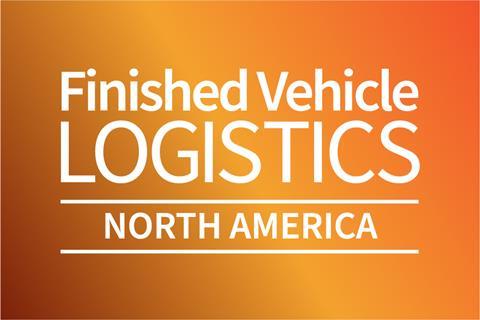“Staying the course”: USMCOC’s Zapanta unpacks tariffs, automotive trade and North American integration
With tariffs on parts approaching and political uncertainty mounting, Albert Zapanta of the United States-Mexico Chamber of Commerce (USMCOC) explores how the US and Mexico are navigating trade, supply chain pressures and long-term planning. For the automotive industry, staying steady may be the smartest move.
As uncertainty rattles the North American automotive industry, the president and CEO of USMCOC, Albert Zapanta, offers a lens into how political turbulence, shifting tariffs and impending policy reviews is shaping decisions on both sides of the border.
In an in-depth discussion with Automotive Logistics ahead of the Finished Vehicle Logistics conference on April 9, Zapanta lays bare the layered complexity of cross-border trade, workforce mobility and reshoring trends, as well as the evolving trilateral dynamics under the US-Mexico-Canada Agreement (USMCA). And while much remains uncertain, his core advice to the automotive industry is: “This is a good time to just stay the course.”

With tariffs top-of-the-agenda and as the USMCA nears review, USMCOC’s Albert Zapanta outlines how political shifts, trade friction and workforce dynamics are reshaping logistics strategies across North America’s automotive sector.
Diplomatic restraint from Mexico
Zapanta commends the Mexican government’s measured response of the recent US tariff announcements. “I have to give the Mexican president kudos for handling it rather deftly,” he says, describing quiet, behind-the-scenes engagement with US policymakers. The recent escalation creates what Zapanta calls “an atmosphere of insecurity,” particularly among companies with cross-border supply chains.
Despite the political rhetoric, according to Zapanta, Mexico worked discreetly to avoid escalation – an approach he believes has so far paid off. But for now, the situation remains in flux, with “some tit-for-tat” diplomacy still possible, depending on wider geopolitical shifts.
Automotive supply chains in the crosshairs
Of immediate concern to the automotive sector is the structural complexity of vehicle production across North America. “An automobile [could] cross the border back and forth as many as eight times,” Zapanta emphasises. “So how do you calculate that [tariff impact]?” If tariffs are applied each time a component crosses the border, the cumulative cost could erode margins and force a fundamental rethinking of supply network design.
While many large automakers take a “wait and see” stance, some ripple effects are already visible. Zapanta notes a rise in used vehicle market activity and inventory buildup, particularly in regions like Texas. “If I was a used car dealer, I would get ready to jack up my prices,” he remarks, highlighting how downstream impacts may appear faster in certain segments.
Implications for USMCA and rule of law
Looking ahead to the 2026 USMCA review, Zapanta emphasises the importance of legal predictability and institutional stability. He expresses concern over recent judicial reforms in Mexico that could, in theory, shift the balance of power toward political appointments. “The concern,” he explains, “is whether we are going to have a situation where it’s a political judicial system that may make decisions outside established legal frameworks.”
Such changes, he says, could create hesitation among investors – not only from the US and Canada but from Europe and elsewhere – especially in infrastructure and logistics projects. “If your contracts may be abrogated, then what really gives you the reasoning to want to invest?” he poses.
Reshoring, nearshoring and workforce strategy
The broader conversation on nearshoring and reshoring continues to evolve, particularly in the context of supply chain resilience. Zapanta offers a nuanced view: “There’s a big push to bring US companies back from China… but so much of the major US companies are in Mexico.” As a result, the focus is less about choosing one country over another, and more about redefining North American integration.
He clarifies a common misconception around the terminology. “Nearshoring” often excites stakeholders in Mexico, while “reshoring” is more centred on re-establishing production within the US interior. Yet Zapanta doesn’t frame these as mutually exclusive. Instead, he advocates for policies that enable workforce mobility and binational training. “We’re finding US companies wanting to bring Mexican workers north… train them, and then take them back down,” he explains.
That approach, however, requires immigration and labour policy innovation. Zapanta references historical models like guest worker programmes and shares that the USMCOC is exploring revivals of cross-border internships and training exchanges like the programme it ran back in the 2000s called the Buen Vecino Internship. “If we can strengthen the supply chain through workforce development, then we create a win-win.”
Slower moves, strategic patience
With new tariffs on parts due to take effect May 3, Zapanta predicts manufacturers will avoid major shifts in their strategic plans – at least for now. “Everybody’s trying to figure out, okay, how do we maintain and how do we then keep things somewhat of an even keel until we really know what this impact’s going to be,” Zapanta notes. The parts issue, he says, ripples through production timelines and could tilt the used vehicle market.
Meanwhile, the coming months offers a “downtime” moment – an opening for retraining, reinvestment and even recalibration. “It might be a good time for retraining or workforce development, especially if companies are planning long-term expansion,” he proposes.
A call for resilience and realism
While political dynamics remain unpredictable Zapanta urges industry leaders to focus on fundamentals. “At the end of the day, it’ll right itself, [though] it may be a little bit of pain here and there,” he says.
